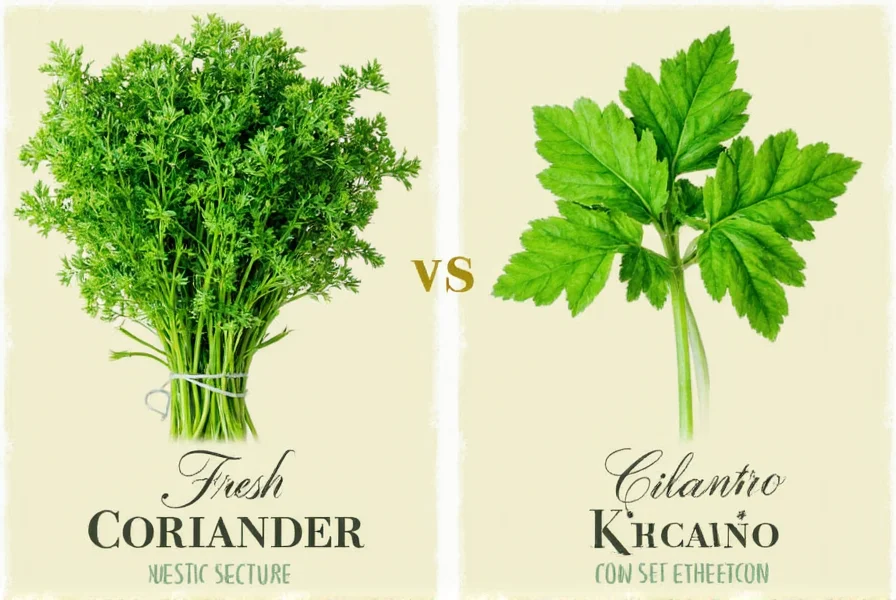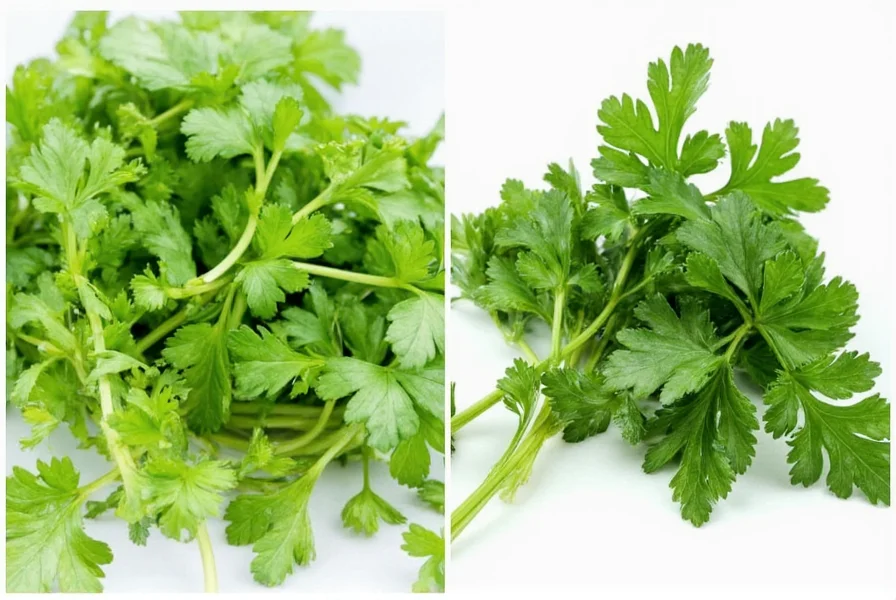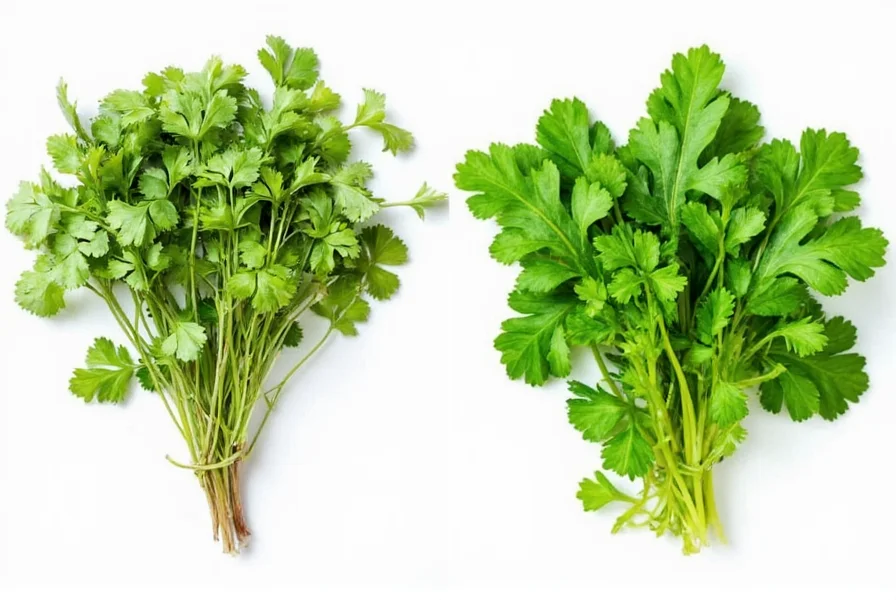Understanding the terminology around fresh coriander cilantro eliminates confusion in recipes and grocery shopping. Whether you're following a Mexican cookbook calling for cilantro or an Indian recipe requesting coriander leaves, you need the vibrant green herb with its distinctive citrusy, slightly peppery flavor profile.
What Exactly Is Coriander vs Cilantro?
The plant Coriandrum sativum produces both the leafy greens and the dried seeds we use in cooking. The fresh leaves and stems go by different names depending on geography:
- Cilantro: Primarily used in North America to describe the fresh leaves
- Coriander leaves: Common term in the UK, Australia, India, and most Commonwealth countries
- Chinese parsley: Another common name reflecting its culinary role
The seeds, meanwhile, are called coriander seeds globally, though some mistakenly refer to them as “coriander” without specification. This dual naming system represents one of the most persistent points of confusion in international cooking.
Culinary Applications Around the World
Chefs and home cooks use fresh coriander cilantro extensively across global cuisines, though preparation methods vary significantly:
- Mexican cuisine: Essential in salsas, guacamole, and as garnish for tacos and enchiladas
- Indian cuisine: Integral to chutneys, raitas, and curries (often called dhania)
- Thai cuisine: Key component in curry pastes and noodle dishes
- Middle Eastern cuisine: Featured in tabbouleh, salads, and spice blends
Understanding these regional differences helps when interpreting recipes that specify either “cilantro” or “coriander leaves.” The herb's unique flavor profile—described by some as citrusy and fresh, but by others as soapy (due to a genetic predisposition)—makes it irreplaceable in many traditional dishes.

How to Select and Store Fresh Coriander Cilantro
Proper selection and storage dramatically extends the shelf life of your fresh coriander cilantro. Follow these evidence-based methods to maximize freshness:
| Storage Method | Expected Freshness Duration | Best For |
|---|---|---|
| Stem-in-water (like flowers) | 2-3 weeks | Daily kitchen use |
| Wrapped in damp paper towel | 7-10 days | Short-term storage |
| Chopped and frozen in oil | 3-4 months | Cooking applications |
| Blended into paste with oil | 4-6 months | Curries and sauces |
The stem-in-water method consistently delivers the longest freshness. Simply trim the ends, place in a glass with 1-2 inches of water, cover loosely with a plastic bag, and refrigerate. Change the water every 2-3 days. This technique mimics the plant's natural growing conditions, keeping it hydrated without waterlogging the leaves.
Common Substitutes When Fresh Coriander Cilantro Isn't Available
When you need fresh coriander substitutes for cooking, consider these alternatives based on your recipe's requirements:
- Parsley: Offers similar texture with milder flavor (best for garnishes)
- Basils: Provides comparable freshness with sweeter notes (works in Southeast Asian dishes)
- Root vegetable greens: Radish or turnip tops offer peppery notes
- Dried coriander leaves: Use sparingly as flavor concentrates during drying
Remember that no substitute perfectly replicates cilantro's unique flavor profile. For authentic Mexican or Indian dishes, consider growing your own coriander plant at home—it thrives in containers with minimal care.

Nutritional Profile and Health Considerations
Fresh coriander cilantro delivers impressive nutritional benefits beyond its culinary value. A quarter-cup serving provides:
- Significant vitamin K (30% of daily value)
- Moderate vitamin C and A
- Trace minerals including potassium and manganese
- Antioxidants with potential anti-inflammatory properties
Research suggests compounds in cilantro may help reduce oxidative stress, though these benefits require regular consumption as part of a balanced diet. The herb's natural compounds also show potential in preliminary studies for supporting healthy digestion.
Addressing the “Soapy Cilantro” Phenomenon
Approximately 20-25% of people perceive fresh coriander cilantro as tasting like soap due to genetic variations in olfactory receptors. This isn't psychological—it's biological. Those with specific variants of the OR6A2 gene detect aldehyde compounds in cilantro that others don't, creating the soapy perception.
If you experience this effect, try these approaches:
- Chopping finely and mixing with acidic ingredients like lime juice
- Cooking briefly to alter the chemical compounds
- Using mature leaves which contain fewer aldehydes
- Gradual exposure to potentially desensitize taste receptors
Practical Tips for Maximizing Flavor
To get the most from your fresh coriander cilantro, follow these professional chef recommendations:
- Add leaves at the end of cooking to preserve volatile flavor compounds
- Use stems in bases and roots in marinades for deeper flavor
- Never substitute dried for fresh in equal quantities (dried is more concentrated)
- Freeze whole sprigs for smoothies or soups where texture doesn't matter
Understanding these nuances transforms how you work with this versatile herb, whether you're preparing authentic Thai curries that require generous amounts or delicate French sauces that use it sparingly.
Frequently Asked Questions
Is fresh coriander the same as cilantro?
Yes, fresh coriander and cilantro refer to the exact same herb (Coriandrum sativum). The leaves are called cilantro in the Americas while most other English-speaking countries call them coriander leaves. The seeds are always called coriander seeds regardless of region.
How can I make fresh cilantro last longer?
The most effective method for preserving fresh cilantro for longer shelf life is storing it like cut flowers: trim the stems, place in a glass with 1-2 inches of water, cover loosely with a plastic bag, and refrigerate. Change the water every 2-3 days. This technique typically keeps cilantro fresh for 2-3 weeks compared to 3-5 days with standard storage.
Why does cilantro taste like soap to some people?
Approximately 20-25% of people have a genetic variation (OR6A2 gene) that causes them to perceive certain aldehyde compounds in cilantro as soapy. This isn't psychological—it's biological. Those with this genetic trait detect flavor compounds that others don't, creating the unpleasant soapy taste perception.
What's the best substitute for fresh coriander in recipes?
The best fresh coriander substitutes for cooking depend on the cuisine: parsley works for garnishes (milder flavor), basil suits Southeast Asian dishes, and root vegetable greens like radish tops offer similar peppery notes. For authentic Mexican or Indian dishes, no substitute perfectly replicates cilantro's unique flavor profile.











 浙公网安备
33010002000092号
浙公网安备
33010002000092号 浙B2-20120091-4
浙B2-20120091-4